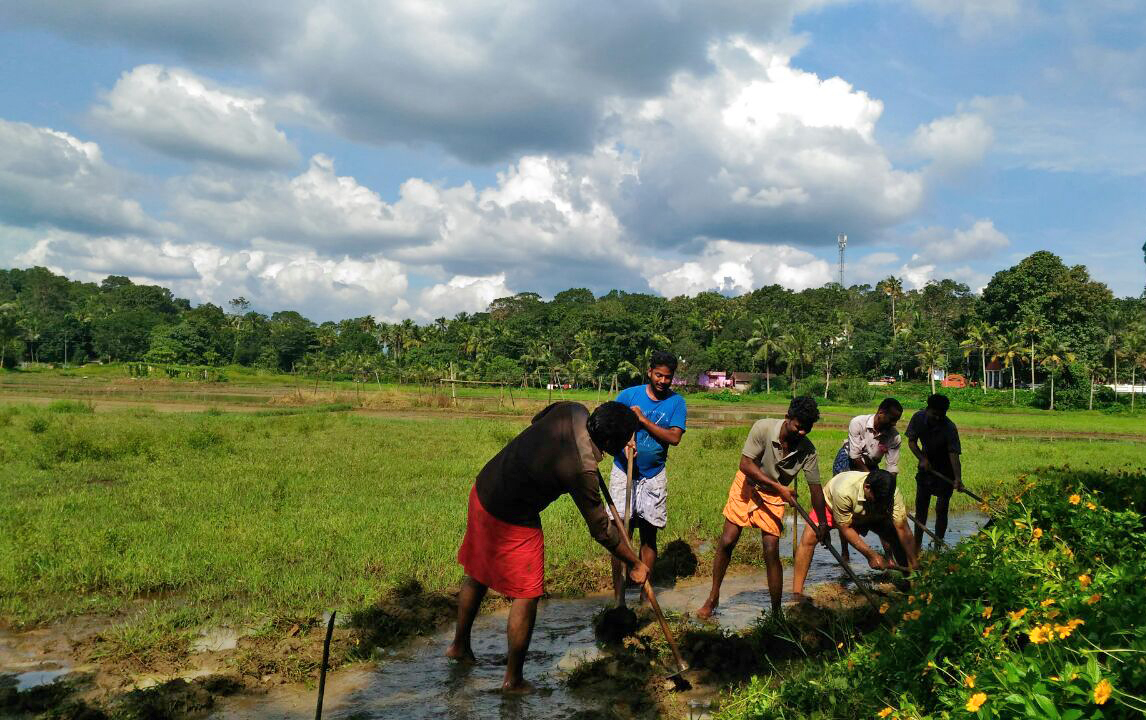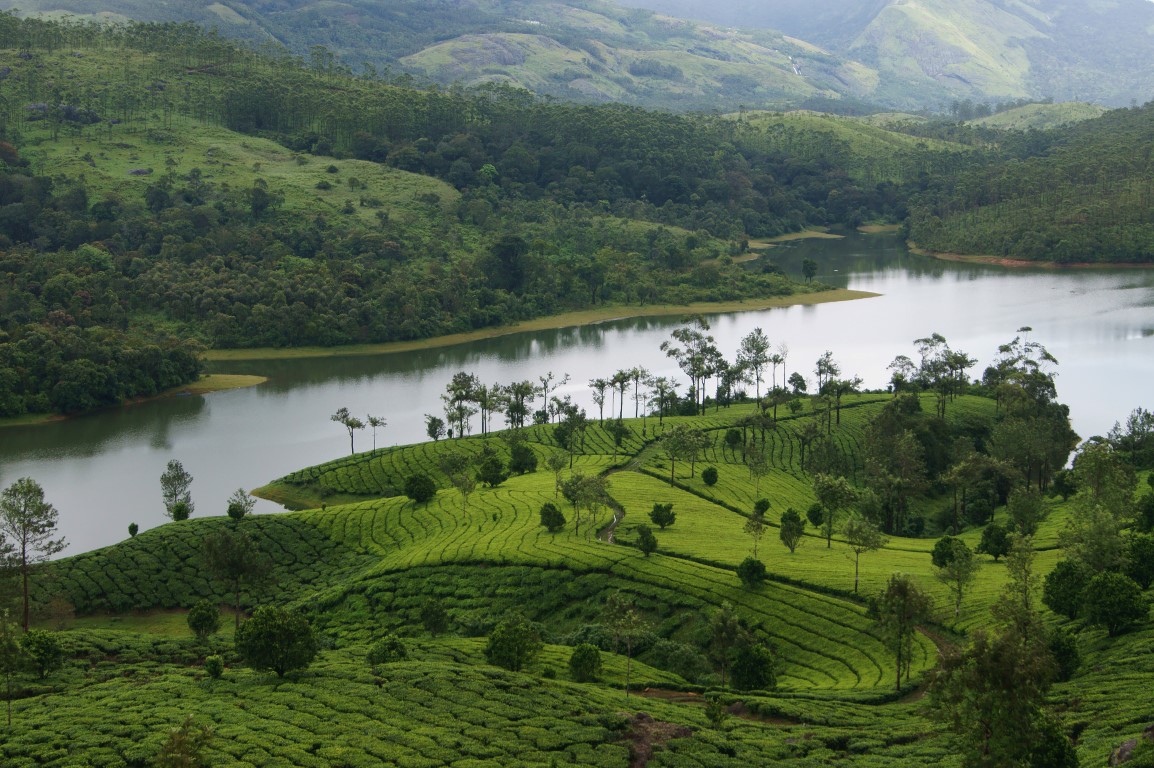Campaigns
Water Budget - A leap towards water security
The water budget is a document that evaluates the availability of water against its utilisation for a specific geographical area. The NavakeralamKarmapadathi 2 under the auspices of Government of Kerala is pioneering to formulate water budget for its Local Self-Government areas. For the first time in India a state is organising its local bodies to evolve its water budget under a uniform methodology.
Preface
Kerala's topography, climate, rainfall distribution, are all explicit of its natural diversity. The uneven climate changes witnessed during the recent years in the state has an imperative effect on nature as well as natural resources. Data related to water availability and demand has great significance, as land use change and other anthropogenic activities have reduced water availability. With the assistance of a vivid database on water availability and by prospective planning the state will be able to restore its sustainability in the water sector. In ancient times Kerala had a well accomplished sustainable water supply system as it is evident from the fact that cultivation in the state was once guided by a precise agricultural calendar based on the Njattuvelas.
Water security is critical for us and for our future generations. For ensuring water security it is essential to have an accurate and authentic estimation procedure based on genuine database of water availability and water requirements .Herein lies the importance of water budget .The goal of the water budget is to provide sustainable water security to the local community, initially by evolving an estimation procedure using scientific methods and by making use of the vivid database on water availability and water requirements of the region and further develop potential interventions by mobilizing the masses on a large scale through the participatory campaigns and through coordination of the Local Self-Government Institutions, the concerned departments and agencies through the integration of Central and State Government schemes.

Relevance of water budget
In Kerala, a large number of agricultural and drinking water schemes are being developed at the regional level and the success of these schemes largely depends on how the aspect of water availability is harmoniously integrated into the schemes. Unlike the northern states of India, where water availability depends to an extent on the melting of snow, the state of kerala solely depends on rainfall for its water requirements.
The water available from rainfall is bifurcated into surface runoff or groundwater which was eventually utilized for multiple requirements. The utilisation of water depends on the requirements of a particular region. The utilisation and requirements vary regionally, though it is essential for drinking, agriculture, industry, and tourism-related activities. Ensuring adequate water availability to meet these demands necessitate a variety of water sector interventions. The water budget offers a supportive baseline report in this regard. Further the water budget will be advantageous to establish potential interventions for extending farming towards larger areas.
Methodology
The estimation of water budget is done using scientific procedures. Initially the attempt is to estimate the water availability of a given geographical region against the water requirement for various purposes. If the water availability is estimated to be quantitatively lower than the essential requirement, potential scientific interventions to increase water availability in that particular region are developed and steps to regulate water utilisation are initiated. Through water budgeting, the Haritha Keralam Mission envisages to undertake tasks to resolve the water scarcity of the local community on a scientific basis by developing potential interventions and mobilizing the masses on a large scale through the participatory campaigns and through coordination of the Local Self-Government Institutions.
The water requirement of a region is often met from regional water sources like rivers, streams, ponds, and wells .The availability of water in a given area is determined by the effective preservation of rainwater in these sources. Water is required for a variety of purposes, including domestic needs, agriculture, animal husbandry, and industrial needs. When estimating water requirements, the current requirement scenario , the future requisites and also water requirements to ensure ecological flow of watersheds are also considered. As the state has surplus water during the rest of the seasons the water budget emphasises more significance on the demand and water availability of the summer season than other seasons.
The water budget also incorporates the volume of water flowing in and out of micro-watersheds in the estimation procedure .The water availability of a particular region during summer season is estimated by integrating the amount of rainfall received in the region with the amount of water available in various water sources in each watershed during the summer. In addition, the soil structure of the region and groundwater availability are taken into consideration. After quantitatively determining the available water, the water requirements for diversified needs are estimated. These requirements are further classified under components and subcomponents and quantitative water requirements for each component and subcomponent are formulated. Finally on estimating both water availability and water requirement, they are compared and evaluated systematically and scientifically for logical conclusions.

It is significant that initiation of systematic interventions for maximum harvesting and storage of rainwater in appropriate regions during surplus months will positively augment the rain water availability in the deficit months. The water budget precisely estimates in a scientific and systematic mode the water availability in surplus months and water requirements of deficit months and prospective planning is to be initiated to bridge the deficit.
A pragmatic and feasible Guideline of the water budget was prepared by CWRDM, the State Water Resources Department, and the Haritha Kerala Mission after scientifically analysing the geographical, social and environmental characteristics of our state. The water budget prepared in this manner will definitely benefit the local self government institutions for prospective planning in almost all sectors to prepare water-related plans.
Preparation
A participatory approach is appropriate for the formulation of the water budget. The geographical features of a region, environmental and social conditions, peculiarities of the local community, potentialities and possibilities for future interventions etc should be incorporated in the data collection process. While ensuring technical perfection, data collection shall be practical and the budgeting should lead to future water management plan appropriate for the locality.

Conclusion
A water budget is a scientific tool for assessing and evaluating water availability and utilisation in a specific geographical region. Water budget ensures sustainable water distribution through conservation of water resources.
| Water Budget Status | |||
| Phase | No.of GPs | No. of BPs | No. of municipalities |
| I | 94 | 15 | 0 |
| II | 82 | 21 | 6 |
| Total | 176 | 36 | 6 |
| As a result, Neerurau DPR has been executed in 83 Grama Panchayats (15 Block Panchayats). | |||
Incorporating SDG
The Sustainable Development Goals (SDG) adopted by the United Nations recognizes availability and sustainable management of water and sanitation for all under its goal 6.
The concept of water budget falls within the preview of Target 6.4 of SDG. The target 6.4 of SDG envisages that,By 2030, substantially increase water use efficiency across all sectors and ensure sustainable withdrawals and supply of freshwater to address water scarcity and substantially reduce the number of people suffering from water scarcity.
The goal of the water budget is to provide water security to the local community, initially by evolving an estimation using scientific procedures by making use of the vivid database on water availability and water requirements of the region . Sustainable management of water resources requires water budgeting as its basic requirement. Management of water resources is possible only with the active participation of local self-governing bodies. Therefore, the time has come to think about water budgeting at the local level. It is a scientific exercise that requires public participation. The haritha keralam mission has attempted to bridge the gap between technology transfer and public participation. Although the NITI Aayog had directed to prepare a water budget, none of the states has yet prepared a comprehensive water budget at the local body level. The guidelines prepared by Kerala will be helpful to other states in preparing their water budgets.
